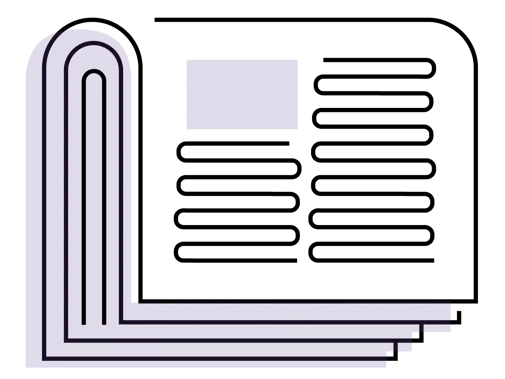This statement was originally published in October 2020, but has been updated since in light of the evolving situation. The most recent update was 24 November 2021.
With the extreme pressures associated with COVID-19, the backlog of elective work, and winter pressures, an extraordinary burden is falling on NHS staff.
It is of paramount importance that staff are not working in a manner that compromises their health, safety or wellbeing, nor that of their patients.
The TCS (terms and conditions of service for NHS doctors and dentists in training (England) 2016) contains a nationally agreed range of safe working hours restrictions and rest requirements, designed to protect junior doctors from excessive fatigue and burnout.
We are aware that staff in the NHS are fatigued from the pressures of the pandemic and it is therefore crucial that these protections must continue to be applied in full whilst the NHS manages multiple demands on its capacity.
However, in instances where an employer believes working arrangements need to be adapted in response to COVID-19 cases, then the below principles should be adhered to. These principles apply only in relation to managing COVID-19.
An employer must not seek to amend your working arrangements, or apply these principles, in response to regular winter pressures, or managing the backlog of care, as these are not exceptional pressures.
- All junior doctor rotas, including COVID-19 rotas, must adhere in full to the Terms and Conditions of Service for NHS Doctors and Dentists in Training (England) 2016.
- All junior doctors must be appropriately risk assessed including specialist occupational health assessment where indicated, and have their safety made paramount. Wherever they are working, they must have access to, and relevant training in the use of appropriate personal protective equipment.
- All new and amended rota patterns require a work schedule (or equivalent mechanism for the purposes of correct calculation of hours, safety limits and pay). As specified in schedule 2 of the TCS, there must be no financial detriment to trainees due to changes outside their control (including where due to risk assessment), and established contractual pay protections will apply.
- Ahead of any rota changes, the affected junior doctors, and their trade union representatives, must be consulted and directly involved in any design or modification of a rota, with appropriate notice and time frame for consultation, including allowing for doctors who are on leave to be able to be consulted.
- Less-than-full-time (LTFT) doctors must have their LTFT status protected, unless they specifically agree otherwise. A LTFT trainee may voluntarily agree to increase their usual LTFT percentage temporarily, or work additional shifts on an ad-hoc basis where this is preferable, more practicable or sustainable. There must be no detriment to LTFT trainees who temporarily work above and beyond their usual hours in order to aid the pandemic response.
-
The usual six week notice of a change in duty pattern should continue to apply. However, if an employer proposes a change in duty pattern, necessitated in response to COVID-19 pressures, which would offer less than the required six week notice period, then the agreement of the affected doctors should be sought. All efforts must be taken to give as much notice as possible, and the standard six week minimum notice periods will apply again following step down to non-surge working patterns.
- Where rota changes are made, all approved annual leave requests and leave for examinations must be honoured, along with any previously anticipated days off (including weekends) that a junior doctor is unable to work due to prior commitments based on the preceding pattern, providing they inform their employer as soon as possible; the doctors and employer must explore these impacts within the consultation process.
- Any COVID-19 related rota pattern must allow for the reasonable use of annual leave in addition to any already approved; rest and recuperation remains essential for patient and doctor safety. Any leave not able to be taken due to clinical/staffing pressures must be paid or carried forward without detriment.
- All efforts should be made to maintain and deliver teaching, training and access to educational opportunities and study leave. Where this is not possible, steps must be taken to mitigate any impacts and collaboratively plan how this will be facilitated at a later date, or in an equivalent alternative format, scheduled within rostered hours.
- Where professional examinations are able to continue during the pandemic, trainees must be facilitated to sit these so as not to delay training progression including consideration of the need for study leave. Leave must also be facilitated for specialty recruitment processes.
- Where rota changes are required, employers must give due consideration to planning for de-escalation back to standard rotas. The above provisions including consultation, adequate notice and protection of existing leave should apply equally during any rota changes made as a result of de-escalation.
- Junior doctors should actively consider requests to be redeployed from their existing working environment or role to aid the response to COVID-19 related pressures, with doctor and employer taking into account personal risk assessments. It is essential that due consideration is given to impacts on health, education, training, detriments to research and out of programme opportunities, and/or progression prior to any re-deployment. The BMA has produced guidance for doctors regarding redeployment during COVID-19, which should be referred to in conjunction with this document.
The BMA recognises that the pressures associated with COVID-19 remain a significant burden, and we know that all NHS staff will continue to be under considerable strain for the foreseeable future; we are proud of how responsive and flexible junior doctors have been, and how hard they continue to work to support the NHS response to the pandemic.
This guidance is designed to ensure that staff safety and wellbeing remains paramount through-out this difficult period, whilst recognising the need for a degree of flexibility and adaptation to a rapidly evolving situation.

